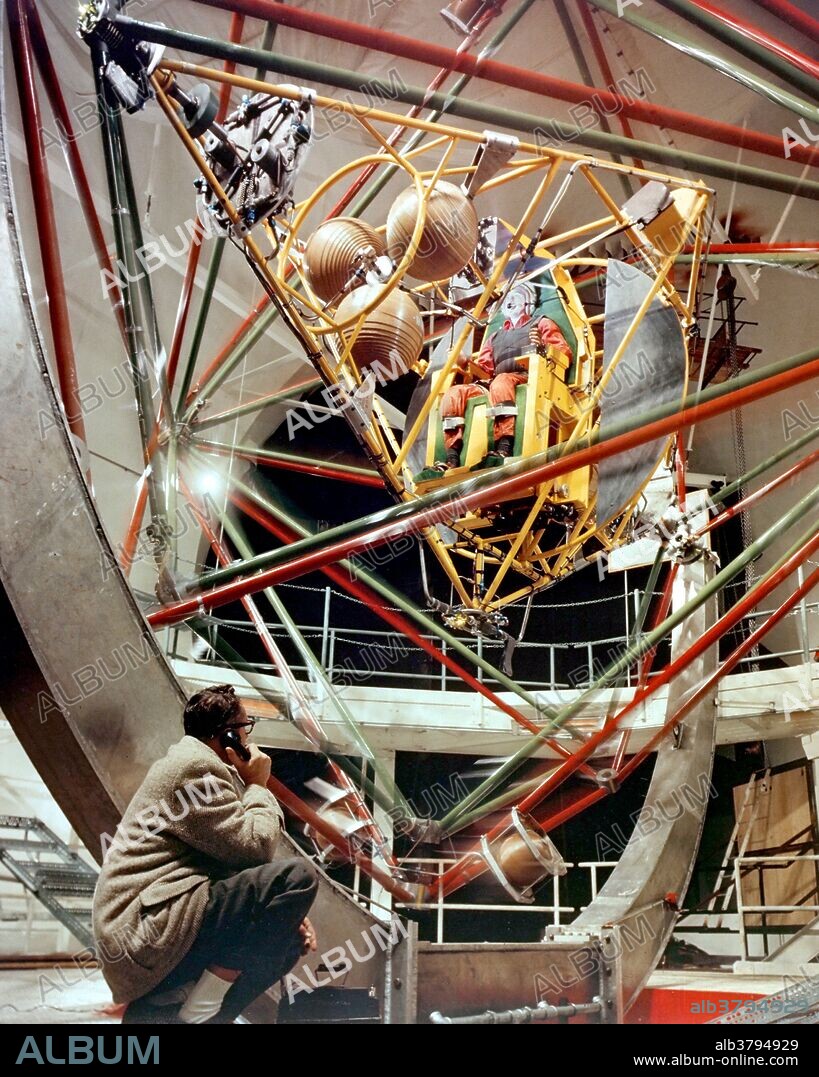alb3794929
Mercury Program, MASTIF Astronaut Training, 1959

|
Ajouter à une autre Lightbox |
|
Ajouter à une autre Lightbox |



Avez-vous déjà un compte? S'identifier
Vous n'avez pas de compte ? S'inscrire
Acheter cette image

Titre:
Mercury Program, MASTIF Astronaut Training, 1959
Légende:
Voir la traduction automatique
The MASTIF, or Multiple Axis Space Test Inertia Facility, was installed at the Altitude Wind Tunnel at the Lewis Research Center. Three tubular aluminum cages could revolve separately or in combination to give roll, pitch and yaw motions at speeds up to 30 revolutions per minute, greater than those expected in actual space flight. Nitrogen-gas jets, attached to the three cages, controlled the motion. At the center of the innermost cage, the pilot was strapped into a plastic seat, similar to that in the Mercury capsule. His head, body and legs were held in place, leaving only his arms free. The pilot actuated the jets by means of a right-hand control column. By reading instruments mounted at eye level before him, the pilot interpreted his motions and made corrections accordingly. A movement of the column to the right or the left fired the nitrogen-gas jets on the roll cage. In a similar manner, forward or backward movement of the column fired the jets on the pitch cage, and twisting movements actuated jets on the yaw cage.
Crédit:
Album / NASA/Science Source
Autorisations:
Modèle: Non - Propriété: Non
Questions sur les droits?
Questions sur les droits?
Taille de l'image:
3360 x 4200 px | 40.4 MB
Taille d'impression:
28.4 x 35.6 cm | 11.2 x 14.0 in (300 dpi)
Mots clés:
CÉLÈBRE • CELEBRITE • ÉVÉNEMENT • EXPLORATION SPATIALE • GUERRE FROIDE • NASA • TECHNOLOGIE • XXE SIECLE
 Pinterest
Pinterest Twitter
Twitter Facebook
Facebook Copier le lien
Copier le lien Email
Email
